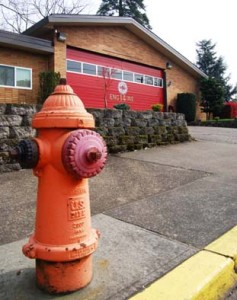
Lessons from My Local Fire Station
 I visited my local fire station a few years ago to talk with the station crew about earthquake preparedness and how our Neighborhood Emergency Team can help fire & rescue operations in the event of an earthquake. Here’s what the station captain told me:
I visited my local fire station a few years ago to talk with the station crew about earthquake preparedness and how our Neighborhood Emergency Team can help fire & rescue operations in the event of an earthquake. Here’s what the station captain told me:
HOW WE CAN HELP RESCUE OPERATIONS
BEFORE AN EARTHQUAKE HITS:
- Identify all local water sources (swimming pools, rivers, streams, etc). Station crew will report to the station they are nearest at the time the earthquake hits, so you may be dealing with someone who doesn’t know the area. They’ll benefit from your knowledge of the area.
- Practice using FEMA Incident Command Structure (ICS) forms. Documentation of what’s happening, who needs help, hazards, resources, etc. is vital for emergency workers who need to understand the situation quickly.
- Practice wound care and triage.
AFTER AN EARTHQUAKE HITS:
- Prioritize getting utilities shut off in all homes and businesses.
- Recreate street signs – this will also help FEMA workers unfamiliar with the area.
- Clear a 100 x 100 foot area for a helicopter landing zone.
- Prepare colored tarps for triage. Tape is fine, but if we can arrange people in large areas that are clearly identified, emergency workers can more quickly identify who needs help.
- Document, document, document. Use those ICS forms!
- Look for shifting buildings, communicate / call out to each other, and be safe.
- Think. Plan. Act. – Don’t become paralyzed with indecision. It’s better to do something rather than nothing, even if it’s not the absolute best action to take. Nothing will be perfect.
- Use a commanding presence. As a person in charge of directing people in various emotional states, it’s important that you present yourself as a person of calm authority. And as a team you will command strength in your numbers, so people will respect you.
I encourage all NETs and community members to get to know your local fire station staff. They’re an invaluable resource in our preparation efforts. If you’ve visited your local station and gained additional advice, please email me to let me know. I’ll share your knowledge here on this blog!
–Laura Hall, Arbor Lodge / Kenton NET Assistant Team Leader, arborlodgeprepares@gmail.com
